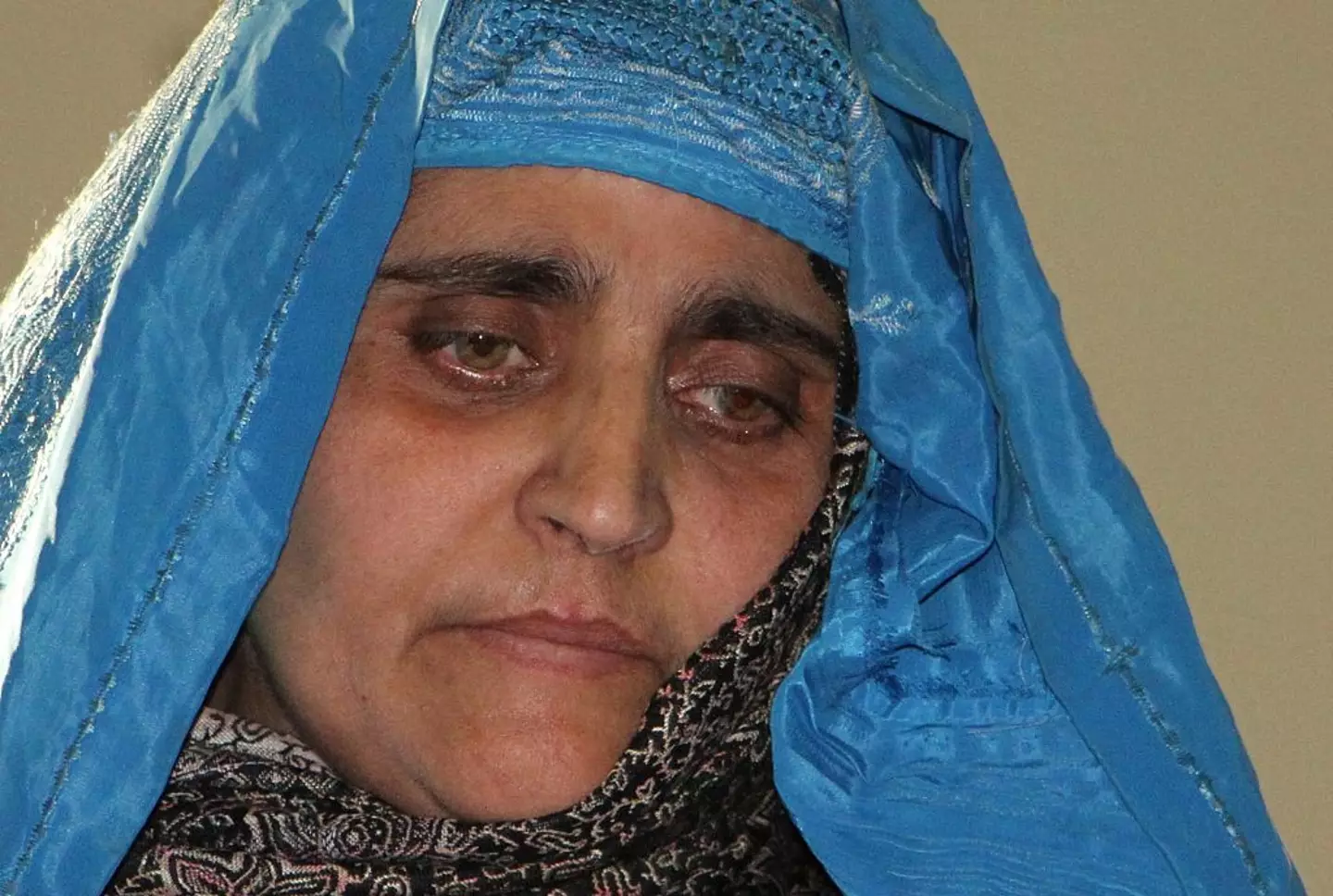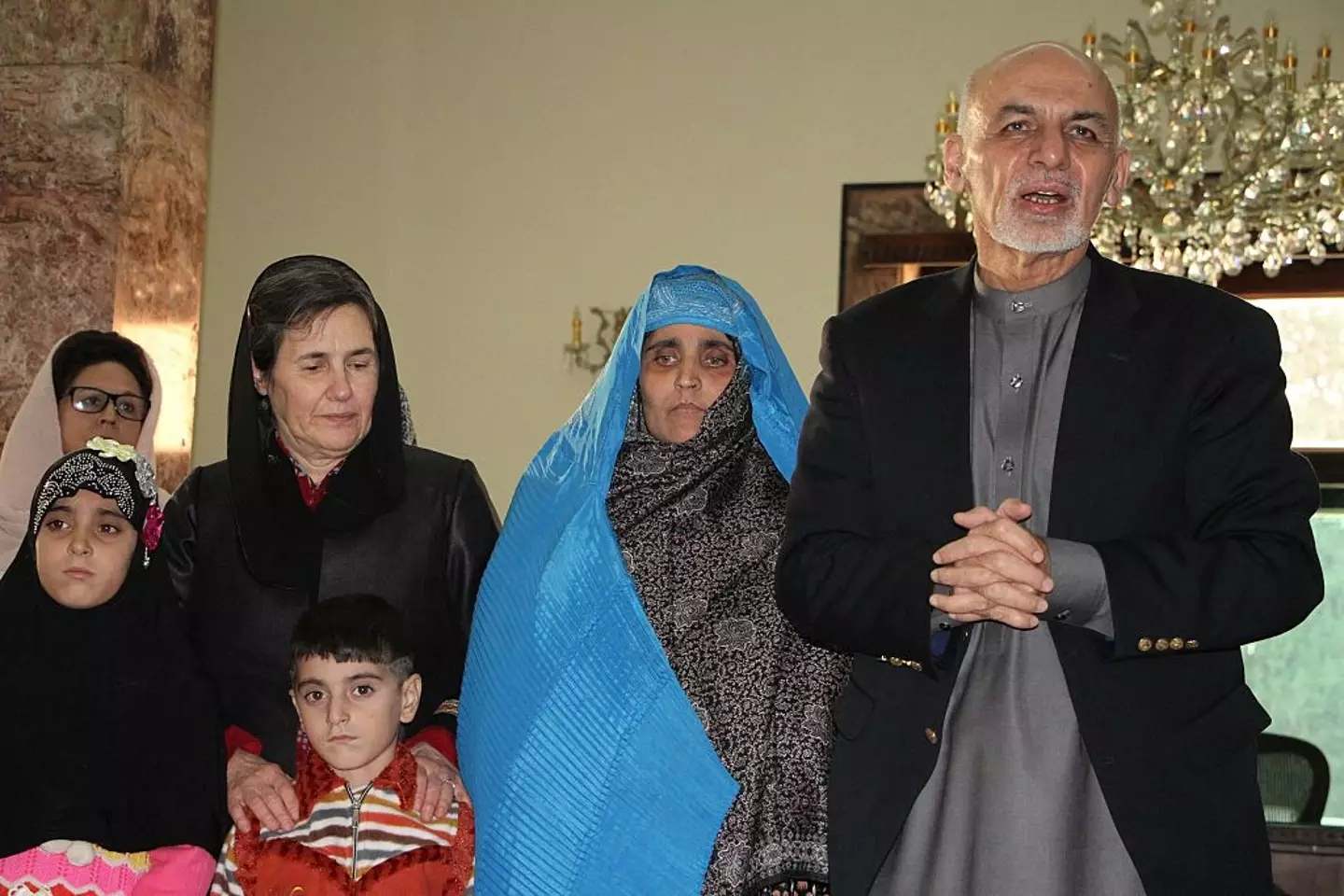The subject of one of the most iconic photographs in history has endured a heartbreakingly difficult life since the moment it was captured.
From images taken in war zones to those depicting the devastating effects of climate change, certain photographs have become etched into the collective memory of the world. One such image is the haunting portrait titled Afghan Girl, taken by war photographer Steve McCurry in 1984.
McCurry captured the striking photo at the Nasir Bagh refugee camp in Pakistan, during the Soviet Union’s occupation of Afghanistan. The young girl’s piercing green eyes became a symbol of the plight of refugees and the human cost of conflict—yet behind the global recognition lay a life marked by hardship and struggle.
It’s likely that you’ll recognize the picture, which shows a young girl staring directly at the camera with piercing green eyes.
But while the iconic image is famous around the world, having appeared on the cover of National Geographic in 1985, most people do not know the story of the young girl, and what happened next.

Steve McCurry posed next to the photo at the Overwhelmed by Life exhibition in Germany (ULRICH PERREY/DPA/AFP via Getty Images)
The girl in the photograph is Sharbat Gula, who was aged 12 at the time.
Her mother had died of appendicitis when she was aged just eight and like many other Afghans, she moved to Pakistan.
It wasn’t until 2002 that she was identified, by which time Sharbat was in her thirties.
‘Her head was held high’
“The photo in 1984 showed her dignity, innocence, heart, fortitude and perseverance. She humanised the true struggle for war refugees globally with no words spoken, simply her face,” McCurry told Al Jazeera in 2016.
“I think there was a bit of defiance in her expression. Her face defined the collective refugee feeling and the struggle.
“I think all Afghans have a common feeling that they’re in a difficult life, but we’re going to power through this and persevere. Her face was troubled, but her head was held high.”

Sharbat was reunited with McCurry in 2002 (Haroon Sabawoon/Anadolu Agency/Getty Images)
When McCurry was able to find Sharbat again, she was living in Pakistan with her family, having married at age 13 – not long after the image was taken.
Sadly, Sharbat had lost one of her daughters shortly after birth.
“When we found her again back in 2002, she was a mother, continuing her struggle to try to make ends meet for her family,” he said.
“We saw an evolution of difficulty transcend on her face.
“She looked hardened because of the climate, anxiety, lack of proper hygiene, poor nutrition. Despite all she’s endured, she’s still going.”
Arrested in Pakistan
Fast-forward to 2016, and Sharbat faced more hardship, after she was arrested for allegedly living in Pakistan under false papers, which she denied.
Since she had reunited with McCurry, she had lost both her husband, Rahmat Gul, and a second daughter, to hepatitis C.
Her daughter, who was aged 22, had left behind a two-month-old baby girl.
Sharbat served 15 days in prison, one week of which she was battling hepatitis C herself in hospital.
“This was the hardest and worst incident in my life,” she recalled.
Pakistan later offered to let her stay in the country, but she declined.
“I told them that I am going to my country. I said: ‘You allowed me here for 35 years, but at the end treated me like this.’ It is enough,” she told BBC.
“If I wanted to go back, it will be just to offer prayer at the graves of my husband and daughter who are buried in front of the house we lived in.”
After she was flown to Kabul, the then-president Ashraf Ghani gifted her with keys to an apartment.
Heather Barr, a researcher at Human Rights Watch (HRW), said at the time: “This woman is a symbol to Afghans and also a symbol to Pakistan.
“The way she was parading in front of the media by Pakistan felt like humiliation of the Afghan government: Here is this woman who had to flee your country for ours.
“The Afghanistan government responded by ostentatiously welcoming her back. The message was: We can take care of our own people.”
Fleeing Afghanistan a second time

The then-president Ashraf Ghani gifted Sharbat keys to an apartment in Afghanistan (Haroon Sabawoon/Anadolu Agency/Getty Images)
However, Sharbat’s journey to safety was not over, and in 2021, following the Taliban takeover in Afghanistan, Italy granted her and her children asylum.
Italy was one of a number of countries that had helped hundreds of Afghans flee following the withdrawal of US forces.
In a 2022 interview with La Repubblica, she spoke about her feelings on the photo and how she has now been able to give her children an education.
“That photo created a lot of problems for me… I would have preferred it had never been taken. I remember that day well, that photographer who arrived at the Nasir Bagh camp school. I was a child. I didn’t like photos. In Afghan culture women do not appear in photos. But there wasn’t much choice,” she said.
“At first, I was concerned about the publicity of my photo but when I found out that I have been the cause of support/help for many people/refugees, then I became happy.
“When we returned to Kabul the government gave us accommodation and supported us, but my husband’s family did not agree that my daughter should receive an education, even though she wanted it.
“I couldn’t do anything to change that choice. But today I can. Here we are free, we can choose. My daughter wants to become a doctor: and I promised her that I will do everything I can to make her wish come true.”
People learning Sharbat’s story for the first time were shocked to hear she’d had such a difficult life, despite her face being recognisable all around the world.
One wrote: “It shows how a difficult life ages a person. She is only 53 now.”
Another said: “I used to have her picture as kid on my school book because it touched my soul for some reason. I am so sorry to hear she had to go through so much. Hope she is now in a safe and good place with her family. Wish her all the best.”
A third wrote: “I do feel sorry for what she went through but mostly I admire her strength, determination in situations when a lot of Western women especially today wouldn’t be able to handle. She deserves our praise not pity.”